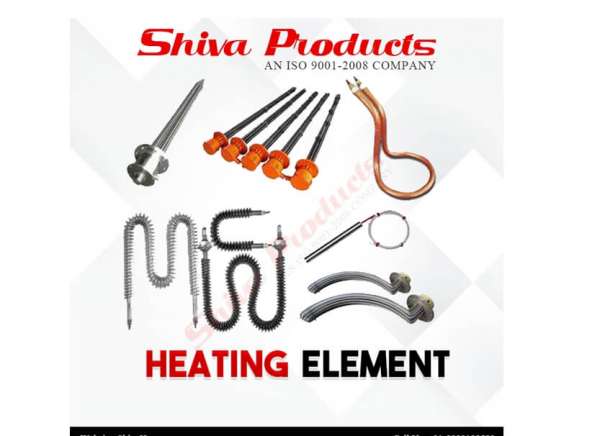A heating element is one of the most important developments of contemporary heating and electricity. Electric heaters, toasters, showers, dryers, and other appliances, for example, rely on heating elements. This is where the electrical Heating Element comes in. The fundamental concept behind heating elements is that using electricity to generate heat makes regulating heat easier than using fire. But what exactly is a heating element, and how does it work?
What is a heating element?
A heating element is an electrically charged structure that produces heat in electric appliances to allow for more accurate temperature control. A heating element uses resistive heating to converts electrical energy into heat. When an electric current passes through a part, it meets resistance, which causes heat to be generated.
Typically, heating elements are made from a coil, ribbon, or strip of wire that is made of nichrome that provides heat using electricity and works as a lamp filament. Heating elements contain an electric current that flows through the coil or ribbon or wire and causes it to become extremely hot. The element transforms the electrical energy that passes through it into heat, which radiates in all directions. The role of nichrome in an electrical heating element is critical to its operation. Nichrome has quickly emerged as the leading alloy for use in electrical heating elements. The high melting point, lack of oxidization, reasonable resistance, and lack of expansion are the primary characteristics that distinguished nichrome as a leading component of electrical heating elements.
How does a heating element function?
The heating element contributes to the conversion of electricity to heat. When an electric current passes through an element, it meets resistance, which causes heat to be produced.
Resistors operate by translating electrical energy to heat energy, in other words, they become hot as electricity flows through them. However, resistors are not the only ones that do this. And a thin piece of wire can become hot if enough energy is passed through it. That is the fundamental concept behind incandescent lamps. A filament is a very thin coil of wire inside the glass bulb. When enough electricity runs into it, it glows white-hot and very brilliantly, essentially producing light by producing heat. As a result, heating elements serve as a strong electrical component that generates heat when a big electric current flows through it.
Types of Heating Elements
As heating elements are used in many appliances, there are several types of heating elements.
Metal Heating Elements
Metallic resistance heating components are coils, ribbons (straight or corrugated), or strips of wire that emit heat in the same manner that a lamp filament does. They’re used in items like floor heating, furnaces, toasters, and hair dryers. Metal heating elements are usually made of nichrome 80/20(80% nickel and 20% chromium). It’s an excellent material because it has a high resistance and, when heated for the first time, forms an attached coat of chromium oxide. The coating under this film does not oxidize, so the wire does not crack or burn out.
PTC Heating Elements
The resistivity of PTC heating elements, which are made of conducting PTC rubber, increases exponentially as the temperature rises. These components operate with heaters that generate a lot of power in the cold. As a result, it heats up rapidly and retains a steady temperature.
Composite Heating Elements
Tubular or sheathed elements in composite heating elements form a fine coil of nichrome-resistant heating alloy cable. The composite heating elements can be used in appliances like toaster ovens as a straight rod. On the other hand, composite elements can be bent and incorporated into appliances such as electric stoves/ovens, and coffee makers.
Conclusion
Shiva heaters is a leading Heating Element Exporters in India. They are available in a range of shapes&sizes on the market. The primary consideration that defines the shape and size of electrical heating components is the dimensions of the unit in which it is used. We have the expertise and staff to assist you with any concerns or problems you may have with your heating system or heating components! For any questions or help contact us.


